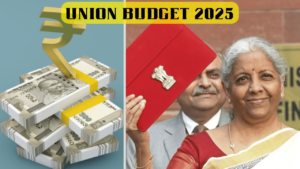The introduction of the Bajaj CNG bike presents a strong value proposition when compared to electric vehicles (EVs) and internal combustion engine (ICE) models.

Bajaj Auto, a leading name in the two-wheeler industry, is set to make history with the launch of the world’s first CNG bike in India. Scheduled for a grand unveiling on July 5, 2024, at Pune’s recreational facility, the event will be graced by Union Road Transport Minister Nitin Gadkari. This innovative move is poised to drastically reduce running costs for bike owners, promising a significant shift in the Indian two-wheeler market.
Features and Cost Efficiency
The Bajaj CNG bike is expected to fall within the 100cc-125cc segment, a popular choice among Indian consumers. One of the standout features of this bike is its dual-fuel capability, allowing riders to switch between petrol and CNG effortlessly. This flexibility not only enhances convenience but also plays a crucial role in cost efficiency.
Compared to traditional petrol bikes, the CNG variant is projected to cut running costs by half. This substantial reduction in fuel expenses is particularly beneficial for individuals earning a monthly income of Rs 30,000 to Rs 35,000. By offering a more economical alternative, Bajaj aims to alleviate the financial strain caused by rising petrol prices.
Market Strategy and Export Plans
Bajaj Auto’s strategic launch of a dual-fuel bike aligns with the company’s goal to provide cost-effective transportation solutions. Beyond the Indian market, Bajaj has ambitious plans to export this groundbreaking bike to six countries, including Bangladesh, Egypt, and Tanzania.
Although the CNG bike will come at an additional cost of Rs 15,000 over its petrol counterpart, the annual fuel savings of approximately Rs 13,000 make it a compelling option for cost-conscious consumers.
Value Proposition of the CNG Bike
The introduction of the Bajaj CNG bike presents a strong value proposition when compared to electric vehicles (EVs) and internal combustion engine (ICE) models. According to Rakesh Sharma, Executive Director of Bajaj Auto, an average customer earning between Rs 30,000 to Rs 40,000 per month can expect to save around Rs 1,500 monthly by opting for CNG. Additionally, CNG, despite being a carbon-based fuel, has a significantly lower carbon content than diesel or petrol, making it a more environmentally friendly choice.
The bike’s development is the culmination of extensive research and innovation over the past two to three years. Bajaj Auto leveraged its experience with CNG in the three-wheeler market to create a two-wheeler that offers substantial savings on fuel costs, addressing the top three or four expenses of a typical household.
Environmental Impact and Government Support
The launch of the Bajaj CNG bike is timely, considering the increasing emphasis on decarbonization by both the government and private companies. The government of India, through the Ministry of Petroleum and Natural Gas, has been aggressively expanding the CNG network, adding 100 new pumps every month. This growth ensures that CNG will soon have ubiquitous availability, making it a viable and convenient fuel option for consumers.
Currently, approximately 60% of India’s districts are covered by a CNG network, with plans to increase this coverage to 80%. This widespread availability is expected to drive a significant shift towards CNG vehicles, much like the transition observed in the three-wheeler market where CNG became the preferred fuel due to its cost benefits.
Consumer Behavior and Market Shift
The success of the Bajaj CNG bike will largely depend on consumer behavior and their willingness to adapt to a new fuel type. While there may be initial hesitations regarding visiting different petrol pumps and the refueling process, the potential savings of Rs 1,500 per month are likely to outweigh these concerns. Similar shifts have been observed in the electric vehicle market, where consumers have transitioned from ICE vehicles despite anxieties about charging infrastructure and battery life.
Bajaj Auto’s CNG bike is designed not just as an economical vehicle but also as a stylish and comfortable ride. It incorporates learnings from the past decade to meet the comfort and ergonomic needs of riders, particularly those in small towns. With a full tank of CNG and petrol, the bike promises an extended range, catering to long-distance riders.
Future Prospects and Export Plans
Looking ahead, Bajaj Auto plans to extend its CNG bike offerings to other markets with established CNG networks. Countries like Bangladesh, Egypt, Tanzania, Peru, and Argentina are on the radar for immediate exports. Additionally, emerging markets like Nigeria, which is developing its CNG infrastructure, present future opportunities for expansion.
The CNG bike, code-named “Bruzer” during development, will be launched under a different, evocative brand name. This new model, with its dual-fuel capability and cost-saving advantages, is set to redefine the two-wheeler market and encourage a shift towards more sustainable transportation options.
Summary
The launch of Bajaj Auto’s CNG bike marks a significant milestone in the evolution of the two-wheeler industry. With its promise of reduced running costs, environmental benefits, and support from the expanding CNG infrastructure, this bike is poised to become a game-changer. As consumers look for more economical and sustainable transportation solutions, Bajaj’s innovative approach is set to lead the way, not just in India, but in several global markets as well.
By leveraging its expertise and aligning with government initiatives, Bajaj Auto is positioning itself at the forefront of a major market transformation. The CNG bike is not just a new product; it represents a new direction for the industry, offering a blend of economy, sustainability, and innovation that is sure to resonate with a broad spectrum of consumers.
Read Next:

The Psychology of Love: Why Valentines Day Matters More Epic Than You Think
Discover the psychology of love and why Valentines Day is more important than you think. Learn how love impacts the brain, strengthens relationships, and boosts

Premier League Highlights: Arsenal Humiliate Man City 5-1, Spurs and Palace Secure Crucial Wins
Arsenal demolished Manchester City 5-1 in a statement premier league highlights win, reigniting their title hopes. Meanwhile, Crystal Palace stunned Man United 2-0, and Tottenham

How Budget 2025 Impacts the Indian Middle-Class: Major Tax Benefits and Glaring Omissions
Budget 2025 offers major tax relief to the middle class, including zero tax on incomes up to ₹12 lakh. However, it misses out on incentives
